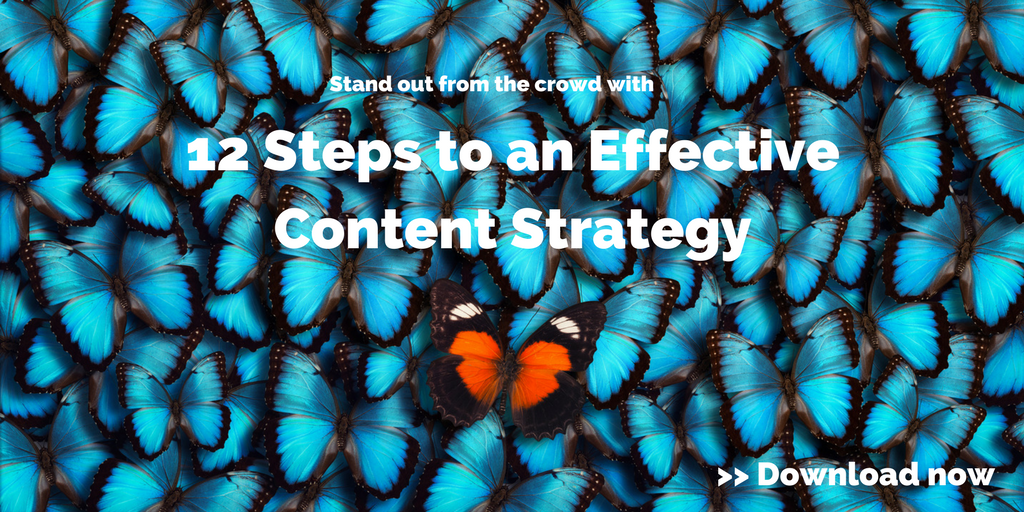
by Fronetics | Apr 11, 2018 | Blog, Content Marketing, Logistics, Marketing, Social Media, Supply Chain
Updated December 5, 2024
Today’s B2B buyer’s journey involves more internet research and more social media use.
The B2B buyer’s journey has undergone a dramatic transformation, driven by digital innovation and changing buyer preferences. Research from Gartner shows that B2B buyers now spend only 17% of their total purchase journey time meeting directly with potential suppliers. Instead, they dedicate 27% of their time researching independently online.
Key Trends Shaping the B2B Buyer’s Journey
Digital-First Research Phase
According to TrustRadius’ 2023 B2B Buying Disconnect report, 87% of buyers want to self-serve part or all of their buying journey. This shift toward digital self-service has fundamentally changed how B2B companies must approach their marketing and sales strategies.
The Rise of Multi-Channel Engagement
Recent data from McKinsey (2023) reveals that B2B buyers regularly use ten or more channels throughout their purchase journey, compared to just five channels in 2016. This multichannel approach includes:
- Online research and comparison tools
- Social media platforms
- Peer review sites
- Virtual product demonstrations
- Video content
- Interactive webinars
The Impact of Peer Influence and Social Proof
LinkedIn’s State of B2B Marketing report highlights that 84% of B2B buyers are more likely to purchase from vendors recommended by their professional network. This emphasis on peer validation has made social proof and customer testimonials more crucial than ever.
Adapting Your Strategy to the Modern Buyer’s Journey
Content Personalization and Industry Expertise
Recent research by Salesforce indicates that 76% of B2B buyers expect vendors to understand their business needs and industry challenges specifically. This demands:
- Industry-specific content creation
- Personalized solution recommendations
- Targeted thought leadership content
- Custom ROI calculations
The Role of Digital Content in Decision Making
Content continues to play a pivotal role, but its format and delivery have evolved. According to HubSpot’s 2023 State of Marketing Report, the most effective content types now include:
- Video content (preferred by 91% of B2B buyers)
- Interactive tools and calculators
- Case studies and success stories
- Industry research and original data
- Expert webinars and virtual events
Strategic Implications for B2B Companies
Understanding the modern B2B buyer’s journey is crucial for optimizing marketing and sales efforts. Companies must:
- Invest in robust digital presence across multiple channels
- Create high-quality, industry-specific content
- Leverage social proof and customer testimonials
- Provide self-service information and tools
- Maintain consistent omnichannel engagement
The B2B buying process hasn’t necessarily shortened, but it has become more complex and digitally oriented. Success requires adapting to these changes while maintaining focus on delivering value throughout the buyer’s journey.
Infographic: the B2B buyer’s journey

The B2B buyer’s journey continues to evolve with technological advancement and changing buyer preferences. Companies that understand and adapt to these changes – by providing comprehensive digital resources, personalizing content, and enabling self-service options – will be better positioned to attract and convert modern B2B buyers.
Related posts:


by Jennifer Hart Yim | Feb 28, 2018 | Blog, Leadership, Logistics, Marketing, Social Media, Supply Chain
For busy executives, being active on social media is kind of like networking. It’s one of those things that everyone says you absolutely have to do to benefit your career, but it’s hard to make it part of your daily routine.
This guest post comes to us from Argentus Supply Chain Recruiting, a boutique recruitment firm specializing in Supply Chain Management and Procurement.
Let’s be honest: it’s even harder for those who came of age before social media became ubiquitous. It can be tough to pin down what channels you should be on, what you should be posting, and the specific ways that a strong social media presence will bolster your career.
Supply Chain Management and its related functions (Procurement, Planning, Vendor Management, Logistics, Operations) are on the opposite end of the spectrum from functions like sales and marketing – areas where your brand is everything.
But from our perspective, there are still lots of different benefits that Supply Chain and Procurement executives can gain from building their social media brands:
- The most obvious – and relevant to a recruitment company like Argentus – is that having a strong presence on social media makes you a more attractive candidate for employers and recruiters.
- Social media activity can help position you as a thought leader in your industry, which can help connect you with new possible suppliers and strategic partners that you can bring into your Supply Chain. This is just as valuable as leads that a Sales professional might gain from being active on social media.
- Being a thought leader raises your profile in a job search, but it can also raise your profile within your company. If you feel stuck or siloed in a certain function, it can give you the opportunity to speak out about other topics within Supply Chain and Procurement. It can lead to increased responsibility and more leverage when it comes to promotions and salary increases.
- If you’re an executive (let’s say Senior Director, VP, and C-Suite), you’re a voice for your company. You can help raise the company’s profile as an employer. This is huge for attracting talent – which is a major difficulty for companies in this tight job market that favours candidates.
With all that in mind, how do you actually gain these benefits? Here are a few tips:
1. Think about goals.
How many of us have heard, “you should really get active on social, it can help your brand,” then signed up for a service, half-heartedly used it for a week and a half, and quit?
It’s important to be strategic about why you’re using social media to help further your career and brand. Are you looking to move into a new job? Are you aiming to connect with possible suppliers and partners? Are you trying to help your company seem like an awesome place to work? Are you going to offer thought leadership to be seen as an expert in the industry and widen your horizon?
When you’ve set concrete goals, it’s much easier to figure out which social media activity is going to be most effective when building your brand.
2. Streamline your channels.
This follows on the previous point. It’s easy to adopt a shotgun approach and sign up for – or resuscitate – your accounts on Twitter, LinkedIn, Facebook, Instagram, YouTube, and all the rest. But it’s best to pick one or at most two channels based on your goals. LinkedIn is always a good pick for networking and personal branding – check out what we’ve done with LinkedIn Publisher. It’s also, obviously, the best tool if you’re in the hunt for a new job and want to network with peers, recruiters and hiring managers.
Twitter is the still the best channel for industry news, whether you’re commenting on it or having conversations about it. Facebook and Instagram are more personal networks, so have less value for your professional career, but if you’re already comfortable on those platforms they can be useful places to be active. Some fields like Procurement have dedicated social media networks (we happen to really like Procurious), which will help you connect with people in the field and share best practices.
One other thing to consider is video. It’s more time – and possibly cost – intensive, but many executives have used YouTube, Vimeo or LinkedIn native video to speak about industry topics and build their personal brands. You might have to develop your video skills (modern smartphones can take videos with more than acceptable quality) or even hire outside video producers, but video has great engagement, so it can be well worth it.
3. Brand yourself.
Once you’ve chosen your channel or channels, you want to focus on creating a professional brand that resonates. This can sound intimidating, but often it just amounts to putting that little extra bit of “polish” into your social media profiles. Upload high quality pictures, include examples of your work or presentations that you’ve done. Think about your niche and the expertise you have to contribute.
4. Develop content.
The next step is to post on your chosen channels regularly. If you’re on LinkedIn or Twitter, seek out connections and follow people and publications that are active in Supply Chain and Procurement.
Picture your social media feed as a place to develop content that might be interesting to other professionals in the field. This is something that a lot of people struggle with, but it’s not too difficult once you get the hang of it. The best way to start is to re-post interesting articles with a comment. Say you’ve seen a great article about technology in Supply Planning: share it, and comment on how your organization does it. After you’ve developed a rhythm, make a quick post asking your network for best practices. Solicit advice. Shine a spotlight on people in your network or company. Make a comment on Supply Chain trends. What’s a big story in the news that has implications for how organizations manage Supply Chain or Procurement? There are so many angles, and once you get active you start seeing more. Writing out your opinions about, say, Strategic Sourcing, might actually help you discover new ideas you didn’t have before.
5. Focus on engagement rather than just numbers.
The return on investment for time spent developing a personal brand isn’t always obvious. Things to pay attention to are new followers, connection requests, or mentions. But numbers aren’t everything. Take it from us: if you’re a consistent voice on your chosen channels, people are often paying attention even if they aren’t “liking” every post. Lots of people are surprised when someone brings up their posts in conversation months later – even if that person has never given any online indication that they’re reading. The key is to focus on quality of engagement rather than quantity of views or other metrics.
Even though it’s quite a buzzword, a strong personal brand is a major asset to any executive or aspiring executive. It doesn’t have to be a chore. It can actually become an illuminating part of your work routine, and it pays off. We hope these tips are useful even if you’ve been active on social media in a professional capacity before!
Related posts:

SaveSave

by Fronetics | Jan 8, 2018 | Blog, Marketing, Social Media, Talent
LinkedIn, with almost 500 million users, is the #1 networking site for professionals. Here are 7 supply chain and logistics professionals to follow for top posts and articles in your industry.
With 94% of B2B marketers using LinkedIn to distribute content, it’s now the premier social media site for businesses. More and more users — including supply chain and logistics professionals — are turning to LinkedIn to keep up with industry news and to understand larger trends affecting their businesses. In fact, LinkedIn gains two new users every second.
With LinkedIn Publishing, users are able to create long-form posts and articles to communicate their subject-matter expertise and interests. Following LinkedIn members gives you access to their profiles, as well as any original or third-party posts they publish on their newsfeeds. So your newsfeed becomes populated with the content the users you follow are publishing and sharing — meaning, if you follow the right people, you get invaluable insight into industry leaders’ thoughts and trends. So what are you waiting for? Here are some of our favorite supply chain and logistics professionals to follow on LinkedIn.
7 top supply chain and logistics professionals to follow on LinkedIn
Kelli Saunders, President of Morai Logistics Inc. at Mode Transportation Associates
Kelli Saunders was recently named one of Canada’s Most Powerful Women – Top 100 for her superior work in the Women’s Executive Network. She was also named Women Exporter of the Year in 2016 and received Canada’s Doing Business Award in 2015. Saunders is a high-achieving entrepreneur with over 30 years of outstanding performance in the supply chain and logistics industries. She understands the complexities and nuances involved in long-term sustainability in the transportation industry.
Sean Griffey, CEO and Co-Founder at Industry Dive
Awarded the Digital Hall of Fame Media News Award in 2015, Sean Griffey is co-founder and CEO of Industry Dive, a digital media company that publishes business news and original analysis for 4.5 million executives in 12 vertical markets. Griffey also runs the Logistics and Supply Chain Professionals group on LinkedIn with almost 270,000 members.
Tim Debus, President & CEO of Reusable Packaging Association
Tim Debus has 20+ years of experience in bringing to market new technologies and leading industry initiatives to improve the production and supply of agricultural commodities, including the development of reusable plastic containers. His group, the Reusable Packaging Association (RPA), leverages its collective voice of industry-leading knowledge to advance the adoption of reusable packaging by clearly demonstrating supply chain efficiencies, environmental benefits, ergonomic improvements, and cost advantages to end users in all industries.
Patrick Bian, Director of Supply Chain Management at Watts Water Technologies
Patrick Bian is a supply chain executive with a consistent track record developing supply chain strategic roadmaps and leading multi-national teams to support the business vision for global companies. His work at Watts Water Technology provides outstanding solutions used to safely convey, conserve and manage water. Standing president of the French American Chamber of Commerce, New England for the past four years, Bian is also a lecturer at Northeastern University for the Masters Program in Business and Engineering.
Steve Norall, Co-Owner/Founder and Vice President of New Development at Cerasis, Inc.
Steve Norall has an impressive breadth and depth of expertise in the logistics and transportation management space, most recently as co-owner/founder of Cerasis, a top third-party logistics provider and truckload freight broker. A frequent poster, Norall covers all manner of supply chain management and logistics, but his current focus on LTL freight management.
Adrian Gonzalez, President at Adelante SCM & Founder/Host of Talking Logistics
Adrian Gonzalez is a well-respected, trusted, and influential supply chain and logistics analyst and strategic advisor to high-level executives in manufacturing, retail, third party logistics, and technology companies. He is the founder, host, and creative force behind Talking Logistics, a weekly online video talk show where he interviews thought leaders and newsmakers in the supply chain and logistics industry. And he is the founder and president of Adelante SCM, which is focused on enabling supply chain and logistics young professionals to share knowledge, advice, and best practices with each other in a private, trusted, and solicitation-free environment.
Michael Levans, Group Editorial Director at Peerless Media
Michael Levans is the group editorial director at Peerless Media, which oversees the publications of Logistics Management, Supply Chain Management Review, and Modern Materials Handling. He oversees the Alliance Awards, an annual program designed to recognize how shippers and their service providers work together to overcome challenges to critical components of their unique supply chains.
Related posts:


by Fronetics | Dec 12, 2017 | Blog, Content Marketing, Marketing
Our most-viewed content marketing posts indicate that marketers are seeking solutions to improve their content marketing programs.
Supply chain and logistics marketers are increasingly seeing the value of content marketing. It is the most cost-effective method to earn leads and sales because it takes into account the way modern B2B buyers are making purchasing decisions (evaluating content they find on the internet).
Looking at our most-viewed content marketing posts this year, I see a trend: marketers are looking for solutions to improve their content marketing programs. I am currently working on our content calendar for 2018, so if there is anything specific you would like to know about, please feel free to email me with suggestions!
Top 10 content marketing posts
1) 4 Ways to Measure Brand Awareness
Building brand awareness is one of the key benefits of content marketing, but it’s notoriously difficult to measure. These four metrics can indicate that you are successfully drawing the public’s attention to — and heightening their knowledge of — your business. That will ultimately generate leads that turn into sales, which is the end marketing objective. Read full post
2) How to Write Better Headlines for LinkedIn Content in 2017
A study of 2016’s most popular content on LinkedIn used data to measure the most popular headlines and topics. The results are really interesting and say a lot about what content resonates with the general LinkedIn community. Tis post summarizes the most popular headline phrases and the most impactful headline words and topics, and suggests ow to use this knowledge to write more successful headlines for your LinkedIn content. Read full post
3) 4 Steps to Building a Successful DIY Content Marketing Strategy
Setting your content marketing strategy is a crucial first step in trying to reach your target audience. Before you begin writing blogs and posting tweets, you need to set goals. A content marketing strategy outlines the methods by which you will target, reach, and engage your audience. Here are four steps, outlined in the guide, to creating a successful foundation to your content marketing strategy. Read full post
4) Want More Leads? Write Better Content
All too often, marketers fall into the trap of sacrificing quality for quantity in their content writing efforts. It’s an easy mistake to make — the pressure to produce a constant stream of content can naturally lead to a drop in quality. But if you’re not writing high-quality, substantive content, you’re wasting time and energy. If you’re wondering whether your content might not measure up, ask yourself these six questions. Read full post
5) 7 Marketing Tasks Supply Chain and Logistics Companies Should Consider Outsourcing
Everyone needs a little help sometimes. In fact, 52% of B2B marketers attribute stagnancy in success to not having enough time devoted to their marketing programs, and 49% attribute stagnation to content creation challenges. Outsourcing marketing allows you to focus on insourcing your core competencies while delegating specialized tasks to external experts. And it’s important to note that you don’t have to outsource ALL of your marketing. Choosing several areas beyond your staff’s expertise or that are particularly time-consuming can help you improve your marketing efforts and take stress off an overworked internal marketing team. Read full post
6) 10 Stats You Should Know about the B2B Buyer’s Journey
Marketers need to be aware of the ways in which the B2B buyer’s journey has changed over the last decade. The vast amount of information available on the internet has afforded buyers a level of self-sufficiency that renders traditional sales models moot. It drives the need for new strategies, like content marketing and social media marketing. The latest B2B Buyer’s Survey offers insight into how B2B buyers are finding vendors, engaging with them, and — ultimately — deciding to work with one. Read full post
7) 3 Tools for Measuring Your Content Marketing ROI
Analyzing the right metrics is crucial to determining whether you are achieving content marketing ROI. According to our Social Media Use Report, 81% of respondents wanted a tracking and measuring tool to prove their ROI. Your resources are limited, so it’s crucial to evaluate your efforts with meaningful numbers that illustrate their effect on your bottom line. So what are they best metrics to use? Here are three of our favorite tools. Read full post
8) 3 Content Marketing Challenges Large B2B Enterprises Face
B2B enterprises with 1000+ employees face unique content marketing challenges that can hinder a program’s overall success. The Content Marketing Institute’s 2017 B2B Enterprise Content Marketing Report brings many of these issues to light. For example, pressure to produce results quickly is a death sentence for content marketing. And being forced to create content for a brand, rather than a specific audience, can be detrimental to content marketing results. Yes, challenges facing these enterprise marketers are often as large as the companies for which they work. This post looks at some of the reasons why that is, and a few solutions for solving them. Read full post
9) How Word of Mouth Can Work for You
Buyers value the opinions of peers and colleagues. In fact, B2B buyers rank it among their top three resources for information. And, in general, 82% of Americans seek recommendations when making a purchase of any kind. Make their chatter work for you. Here are three tips to turn word-of-mouth marketing into leads. Read full post
10) 3 Quick SEO Tips to Improve Your Blog Right Now
Content marketing aims to draw potential buyers who are searching the internet for products and services like yours to your website. The strategic distribution of content helps search engines understand what your website is all about and direct relevant parties to it. You can help the search engines’ algorithms more effectively link searchers and your content by doing these 3 easy things. Read full post
Related posts:


by Fronetics | Oct 25, 2017 | Blog, Content Marketing, Current Events, Marketing, Social Media
Also in October’s 2017 social media news: Vimeo is getting in the live streaming game, Instagram doubles its ad dollars, and YouTube will be taking over America’s favorite past time.
While the fall season has many of us wrapped up in blankets with flavored lattes, social media sites are spicing things up in lots of other ways.
Shopping for the holidays just got easier thanks to Instagram. YouTube is taking over Major League Baseball. Twitter is making those Throwback Thursdays way more convenient. And Facebook wants us all to know you can’t judge a book by its cover.
Instagram Expands Shopping Capabilities on the App
Instagram is teaming with Shopify to create the capability for brands and retailers to sell products directly from their Instagram accounts. Shoppers will be able to click on the experimental tagging links and purchase products directly through the app. Instagram is working overtime to have 500,000 retailers available for the upcoming holiday season, including Black Friday and Cyber Monday. “Discovery is at the heart of the Instagram experience. Together with Shopify, we are enabling new ways to turn discovery into exploration, allowing Instagrammers to find new things from brands they love and businesses to find opportunities to build relationships with these valuable customers,” Instagram said.
YouTube Named Presenting Sponsor of the World Series
YouTube is working overtime to promote its live TV service by becoming the presenting sponsor of the MLB World Series. Kelly Merryman, YouTube’s managing director of content partnerships in America, said in a statement that the deal serves to underscore the kinds of popular sporting events that are available on YouTube TV. The multi-tiered deal serves as the first national ad campaign for the video platform and will include national TV ads, on-air mentions during each game, in-stadium branding, and more.
LinkedIn Tests Geofilters for Events and Conferences
LinkedIn is testing the ability for users to tag events and conferences with location-based filters, taking a page from Snapchat. As part of the platform’s new native video tools, LinkedIn is giving conference attendees the opportunity to add dedicated event frames to the videos they create while attending such functions. The illustrations are styled like conference badges, with the user’s profile photo in the right-hand corner. The badges also indicate the user’s role (such as a speaker, panel member, or attendee).
Facebook Tests Publisher-Information Button on Articles
Facebook is experimenting with adding a publisher-information button to articles shared in your News Feed that will provide additional information about the author and context around the article without having to navigate away from the site. The test was born out of feedback from the Facebook Journalism Project, which the ‘Book launched to ensure the credibility of content shared by its users . By creating transparency around publishers and their content, Facebook says its helping users to make more informed decisions. “Helping people access this important contextual information can help them evaluate if articles are from a publisher they trust, and if the story itself is credible,” wrote Facebook.
Twitter Adding a Bookmarking Tool
Twitter has announced its plan to add a new bookmarking tool to its app. The “Save for Later” tool will allow users to save a tweet to read later on. The feature’s impending launch was first unveiled on Twitter itself, naturally, when Head of Product Keith Coleman announced that a new way to save tweets was in the works as a result of a company HackWeek project dubbed #SaveForLater.
Vimeo Launches Live Streaming Platform
After acquiring Lifestream, Vimeo is launching its own live-streaming platform called Vimeo Live. The new platform will allow users the ability to create, edit and distribute live events. The paid membership is promoting better viewer engagement, speedy support, and in-depth analytics to track your progress.
Instagram Grows by 100 Million Users in Four Months and Doubles Advertisers
Instagram is having a pretty good year. It has reached over 800 million monthly users, with 500 million daily active users. This is a 100-million-user increase since April. And the platform’s growth doesn’t stop there. Instagram also reported it has 2 million advertisers. “Time spent watching video on Instagram is up more than 80% year over year, while the number of videos produced per day has increased by 4x from last year. With the emergence of innovative mobile video formats, like Instagram Stories, business are finding more opportunities to connect with their audiences, whether on the go or in the moment,” wrote the Instagram Business Team on its Business Blog.
YouTube Debuts New Ad Tech Tools for Brands
YouTube is making it easier for advertisers to get in front of their target audiences. Marketers can now reach potential customers based on their searches and the videos they’re already watching with four new ad tech tools:
- Video Ad Sequencing, which allows advertisers to create a video funnel that moves users through a planned sequence of video ads;
- Director Mix, which automatically customizes video content for different audiences;
- Custom Affinity Audiences which allows advertisers to define audience targeting based on users’ YouTube searches;
- Neilsen’s Matched Panel Analysis, which allows advertisers to measure the impact of video alongside other Google campaigns on offline sales.
The video site is hoping to make it easier to create a relationship between what advertisers have to offer and the people that are interested in those offers.
Related posts:









